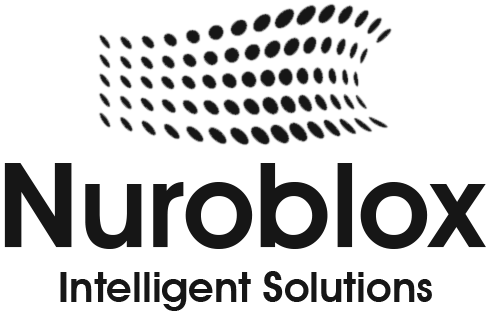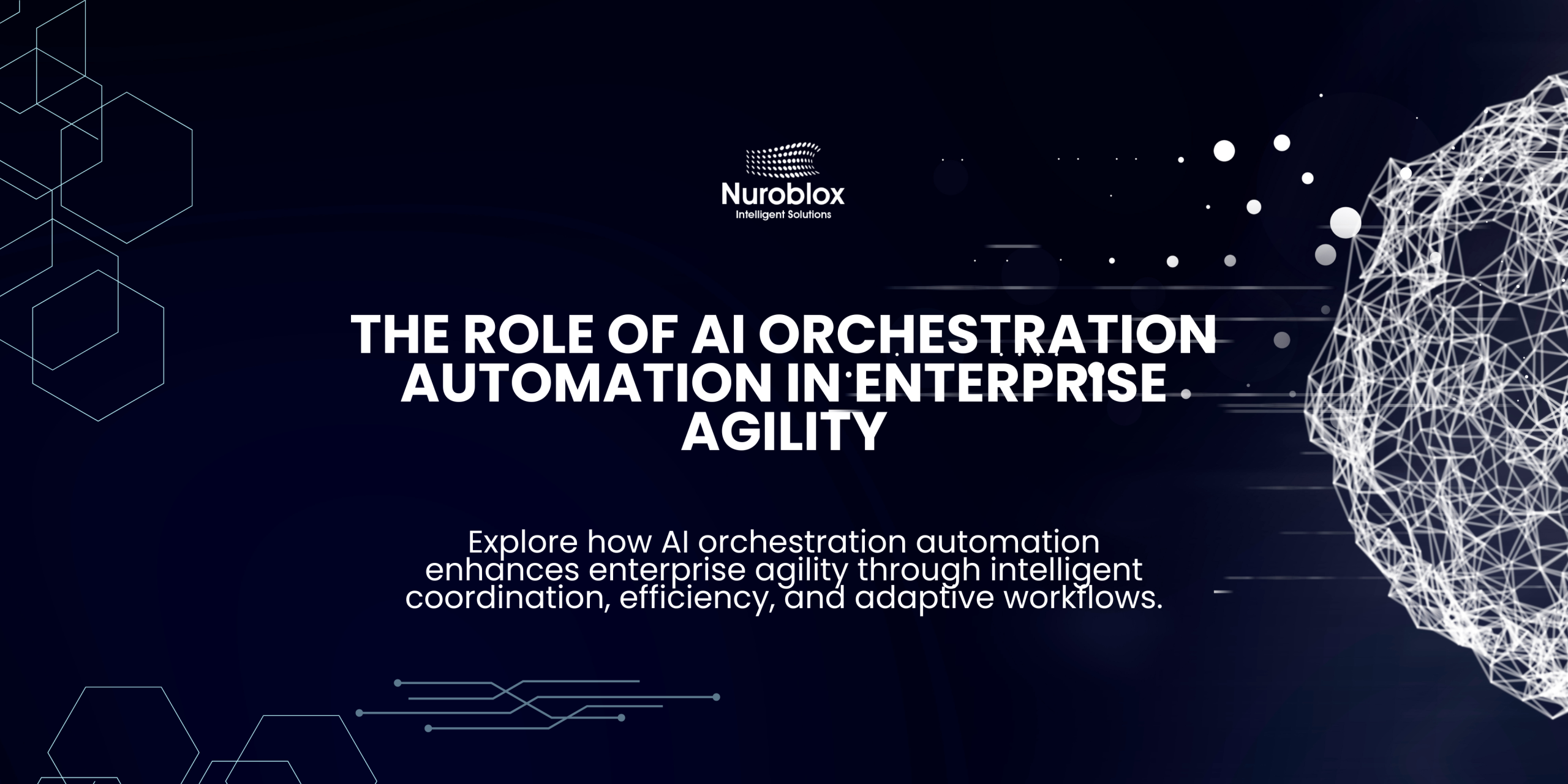The Role of AI Orchestration Automation in Enterprise Agility
In today’s hyper-competitive landscape, enterprise agility is no longer a strategic advantage; it is a baseline requirement for survival. Businesses are under immense pressure to innovate faster, respond to market shifts in real time, and deliver superior customer experiences. In response, most have adopted a suite of automation tools, from Robotic Process Automation (RPA) to complex machine learning models. Yet, many find themselves with a powerful collection of digital tools that operate in isolation, creating fragmented workflows and a “digital bottleneck” that stifles true agility.
The challenge is urgent. While enterprises are expected to heavily leverage AI agents for efficiency and cost savings in 2025 , simply deploying more AI does not guarantee transformation. The real value emerges when these disparate systems work together in a coordinated, intelligent ecosystem. This is where AI orchestration becomes the critical enabler, acting as the connective tissue that transforms isolated automation into enterprise-wide intelligent process automation. This post explores the pivotal role of AI orchestration in dismantling operational silos and building the truly agile, resilient enterprises of the future.
The Agility Gap – Why Traditional Automation Falls Short
For years, enterprises have invested in technologies to automate specific tasks. RPA bots handle repetitive data entry, Business Process Management (BPM) systems define structured workflows, and standalone AI models provide predictive insights. While each tool offers value within its domain, this piecemeal approach creates significant challenges at an enterprise scale –
- Automation Silos – Different business units deploy different tools that cannot communicate or collaborate, leading to disjointed processes and inconsistent data.
- Limited Adaptability – Rule-based automation struggles with the dynamic, unpredictable nature of modern business. When exceptions occur or conditions change, these rigid workflows often break, requiring manual intervention.
- Complex Integration – Manually linking a growing number of APIs, databases, and legacy systems is costly, time-consuming, and brittle. Each new tool adds another layer of complexity to an already tangled web of integrations.
- Poor Scalability – Automation designed for a single task or department often fails when faced with the high-volume, variable demands of an entire enterprise, creating performance bottlenecks.
These limitations result in an “agility gap,” where the potential of individual automations is never fully realized at the enterprise level. Organizations are left with pockets of efficiency but lack the cohesive, end-to-end intelligence needed to navigate market disruption with confidence.
What is AI Orchestration? From Fragmented Tasks to Coordinated Outcomes
AI orchestration is not just another automation tool; it is a strategic layer that intelligently manages and synchronizes all AI and automation technologies across the enterprise. It acts as a “digital conductor,” ensuring that every component from RPA bots and AI agents to APIs and human experts works in perfect harmony to achieve a common business goal.
Unlike standalone automation that focuses on executing individual tasks, AI orchestration focuses on the end-to-end process. It answers the critical question: “How do we ensure all these automated tasks combine to deliver a valuable, scalable, and adaptive business outcome?”
Core Functions of an AI Orchestration Platform
An effective AI orchestration platform provides a centralized framework for managing the entire automation lifecycle through several key functions –
- Workflow Coordination – It connects multiple automated tasks across different systems, such as linking a customer relationship management (CRM) system with an enterprise resource planning (ERP) platform and a credit scoring AI model for a seamless loan approval process.
- Decision Orchestration – It uses AI-driven logic to dynamically choose the best model or automation path based on real-time data. For example, selecting the most appropriate fraud detection model based on the transaction type and risk level.
- Data Integration – It consolidates and prepares structured and unstructured data from various sources like CRMs, ERPs, and IoT sensors to provide a unified view for automated workflows.
- Scalability Management – It dynamically allocates computing resources or invokes microservices as needed, ensuring processes can scale efficiently during periods of high demand without performance degradation.
- Exception Handling – It intelligently detects errors or anomalies in a workflow and automatically reroutes the task to a human expert or an alternative automated process, ensuring resilience and continuity.
The Strategic Imperative – How AI Orchestration Drives Enterprise Agility
By moving from task-level automation to process-level orchestration, enterprises can unlock transformative benefits that directly fuel agility. Organizations that successfully orchestrate AI across their operations report productivity gains of 30–40%.
Powers Real-Time, Context-Aware Decision-Making
Enterprise agility requires the ability to make smart, fast decisions. AI orchestration enables this by creating workflows that are not static but adapt in real time. By integrating data from multiple sources, an orchestrated system can analyze context, predict outcomes, and route tasks intelligently. For example, a support ticket can be automatically prioritized and routed based on a real-time sentiment analysis of the customer’s communication and their historical value to the company. This transforms processes from reactive to proactive, allowing the business to respond to opportunities and threats with unprecedented speed.
Unlocks Radical Efficiency and Scalability
Orchestration dismantles silos and streamlines complex, multi-step business processes like order-to-cash or supply chain management. By providing a unified layer of control, it eliminates the redundancies, bottlenecks, and manual errors that plague fragmented systems. This leads to significant cost optimization, with some organizations achieving 20–40% cost reductions in multi-cloud environments through intelligent resource management. Furthermore, features like dynamic resource allocation and self-healing systems ensure that workflows can scale to meet enterprise demand and operate 24/7 without interruption.
Fosters Human + Machine Collaboration
AI orchestration optimizes the collaboration between human employees and their digital counterparts. By automating repetitive, high-volume tasks, it frees human experts to focus on strategic, creative, and high-value work that drives innovation. This model maximizes efficiency without sacrificing the critical oversight and nuanced judgment that humans provide. This shift is becoming increasingly critical as non-technical teams are expected to build the vast majority of technology products and services by 2026, according to Gartner.
Ensures Enterprise-Wide Governance and Compliance
In a complex regulatory environment, maintaining governance and security across dozens of systems is a monumental challenge. AI orchestration provides a centralized management hub for enforcing policies, managing access control, and ensuring auditability across all automated workflows. This unified oversight ensures that AI models are performing as expected, reduces the risk of security breaches, and simplifies compliance with regulations like GDPR and HIPAA.

The true power of AI orchestration is best illustrated through its practical applications –
- Intelligent Customer Service – Instead of a single, limited chatbot, an orchestrated system can deploy multiple specialized AI agents. One agent performs the initial customer triage, a second analyzes the conversation for sentiment, a third intelligently routes the issue to the best-suited human expert, and a fourth updates the CRM with a complete record of the interaction all in one seamless flow.
- Dynamic Supply Chain Logistics – In a modern warehouse, orchestrated AI agents can collaboratively manage inventory, coordinate picking and packing robots, and perform real-time quality control. In logistics, agents can analyze live traffic data, delivery priorities, and fleet capacity to continuously optimize routes, reducing fuel costs and improving on-time delivery rates.
- Enterprise Success Stories – Leading companies are already reaping the benefits. The BMW Group implemented a multi-agent system called “AIconic” to orchestrate information retrieval, significantly boosting employee efficiency. Mayo Clinic is using an orchestrated, agentic AI approach to reimagine both clinical and operational workflows, anchored in security and patient experience.
The Future is Coordinated – Trends Shaping AI Orchestration
The evolution of enterprise automation is accelerating, with AI orchestration at its core. Several key trends are defining the road ahead –
- Hyperautomation Becomes the Norm – The strategy of automating as many business processes as possible is now mainstream. Gartner predicts that by 2026, over 80% of enterprises will adopt orchestration as a fundamental component of their hyperautomation initiatives.
- The Rise of Agentic AI – The future of automation lies with autonomous AI agents that can reason, plan, and execute complex tasks. AI orchestration is the essential framework needed to manage these agents, ensuring they collaborate effectively toward shared goals. It is expected that 85% of enterprises will use AI agents in 2025 to drive efficiency and productivity.
- Ecosystem Orchestration – The most advanced enterprises will soon extend orchestration beyond their four walls to coordinate processes across their entire business ecosystem, including suppliers, partners, and customers, creating truly seamless, end-to-end value chains.
Architecting Your Intelligent Enterprise
In 2025, enterprise agility will not be defined by who has the most advanced AI tools, but by who can make them work together most effectively. Success is no longer about isolated wins; it is about creating a synchronized, intelligent, and resilient operational fabric. AI orchestration is the strategic backbone that enables this transformation, moving organizations from a state of fragmented automation to one of coordinated, enterprise-wide intelligence. It is the pragmatic foundation for building a business that can adapt, innovate, and thrive in an era of constant change.
As you scale your AI initiatives, are you building a collection of disconnected tools, or are you architecting a truly intelligent, orchestrated enterprise?


